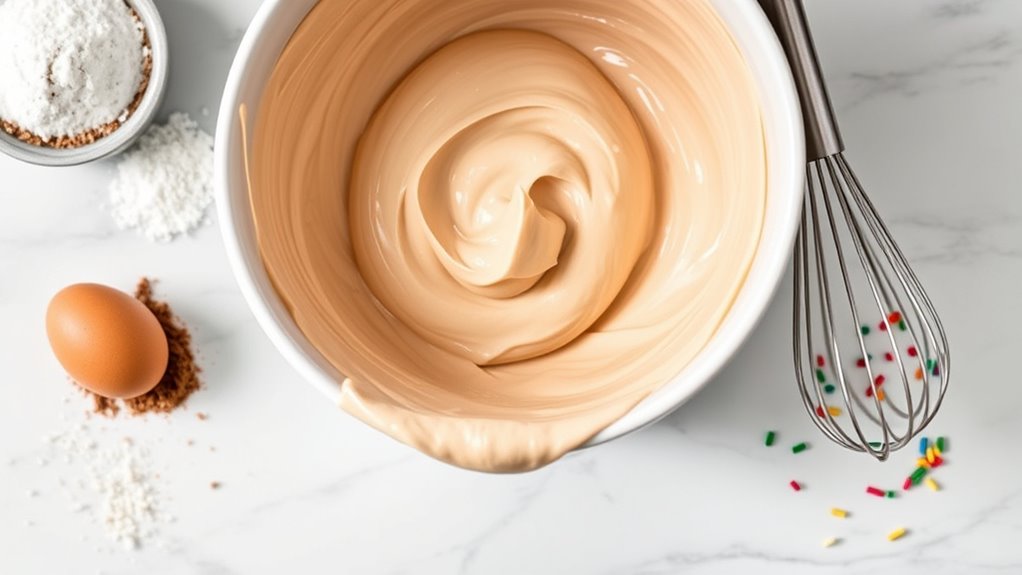To make perfect pudding frosting, start by whisking 1 small box of instant pudding mix with 1 cup cold milk until thick. Soften ½ cup butter, then beat it until creamy. Gradually add 2 cups powdered sugar and 1 teaspoon vanilla, mixing until smooth and fluffy. Spread or pipe on chilled cakes for best results. Keep all ingredients cool to avoid melting. Follow these simple steps, and you’ll create a luscious frosting ideal for decorating desserts—keep exploring to master the finer details.
Ingredients and Quantity
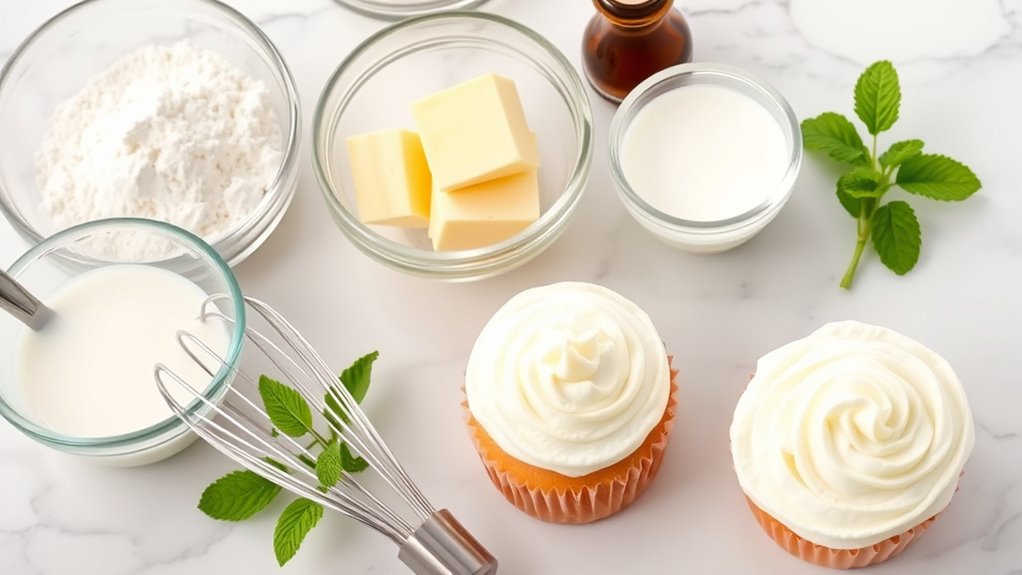
To make the perfect pudding frosting, you’ll need exactly five key ingredients: instant pudding mix, cold milk, softened butter, powdered sugar, and vanilla extract. Selecting the right pudding variations lets you explore diverse flavor combinations, granting you the freedom to customize your frosting to any dessert. Measure each ingredient precisely to guarantee consistency and a smooth texture.
| Ingredient | Quantity |
|---|---|
| Instant pudding mix | 1 small box (3.4 oz) |
| Cold milk | 1 cup |
| Softened butter | 1/2 cup (1 stick) |
| Powdered sugar | 2 cups |
| Vanilla extract | 1 teaspoon |
This foundation provides a reliable base. Feel free to experiment with pudding variations to create unique flavor combinations that suit your taste and creative liberty.
Preparations

With your ingredients measured and ready, the next step is preparing them correctly to achieve that smooth, creamy pudding frosting. Begin by selecting the right pudding type—instant or cooked—since each impacts texture and stability differently. If you’re using instant pudding, whisk it with cold milk until thickened, guaranteeing no lumps remain. For cooked pudding, cool it completely to avoid melting the frosting later. Next, prepare your base—whether butter or cream cheese—by bringing it to room temperature for easy blending. Mastering frosting techniques like gradual mixing and gentle folding will help maintain airiness and prevent separation. Accurate preparation guarantees your pudding frosting has the perfect consistency and flavor balance, giving you the freedom to create desserts that impress with every bite.
How to Cook
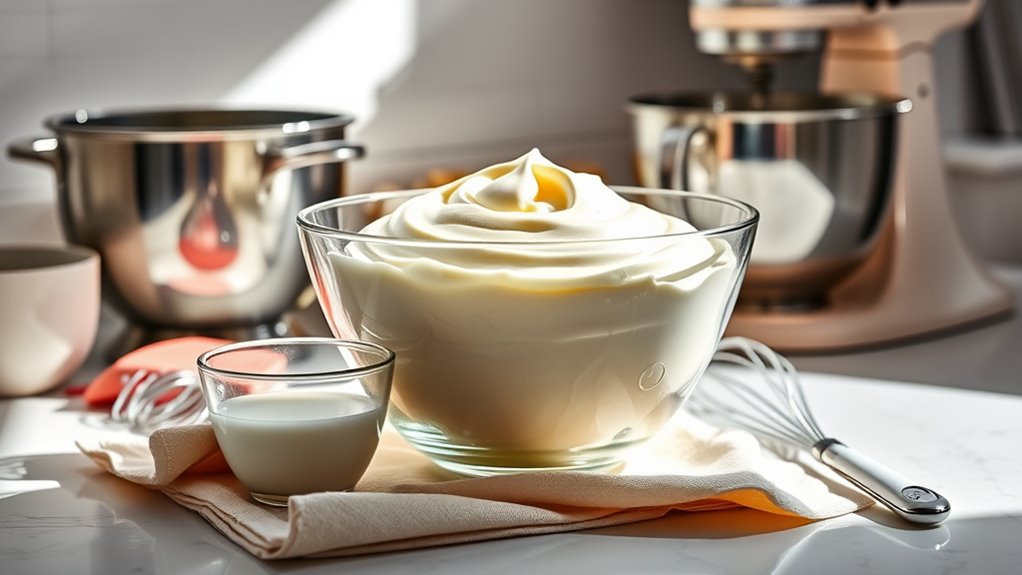
- Select the appropriate pudding type based on your desired texture: instant or cooked pudding.
- For cooked pudding:
- Whisk the mixture constantly over medium heat to prevent lumps and ensure even thickening.
- Use a double boiler for gentle, controlled heat to preserve the pudding’s delicate consistency.
- Stir continuously to avoid scorching.
- For instant pudding:
- Combine the pudding mix with cold milk.
- Beat thoroughly until it thickens.
- Adhere to precise cooking techniques to avoid graininess and separation, which are key for stable frosting.
- Once the pudding is thickened, remove it from heat promptly.
- Let the pudding cool slightly before mixing it with softened butter or cream cheese.
- This method ensures your pudding frosting is luscious, stable, and perfect for decorating freedom.
How to Serve
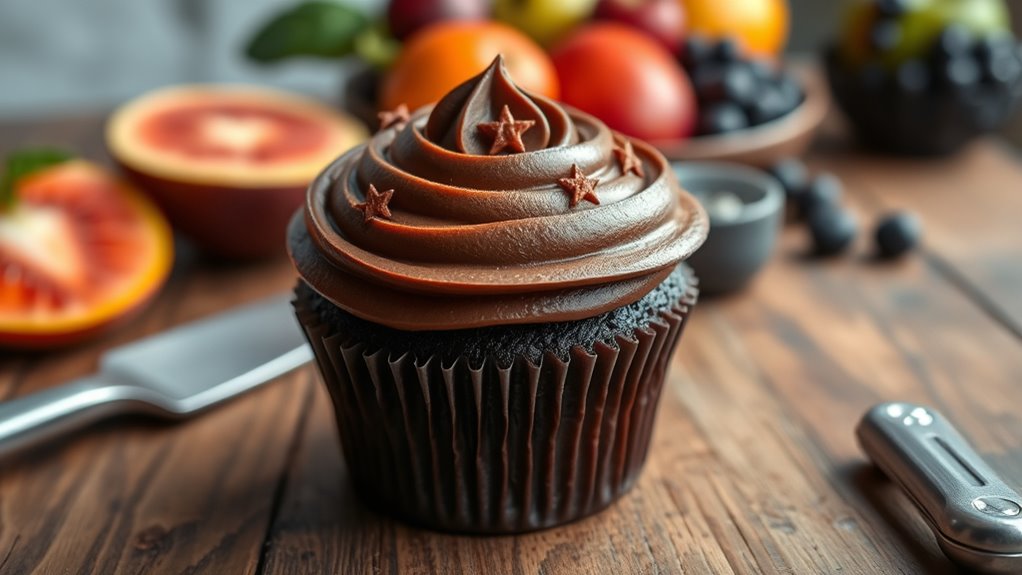
Once your pudding frosting has reached the ideal consistency, it’s time to focus on serving it in a way that highlights its smooth texture and rich flavor. Start by spreading it evenly over chilled cakes or cupcakes, ensuring a clean, polished look. For presentation ideas, consider piping delicate swirls using a star tip to add elegance and visual appeal. You can also serve it as a dip alongside fresh fruit for a light, invigorating treat. When plating, use a palette knife for smooth edges or a spoon to create rustic peaks. Serving suggestions include pairing the frosting with vanilla or chocolate-based desserts to complement its taste. By thoughtfully applying these methods, you’ll elevate your dessert’s appearance and delight those who enjoy both freedom and finesse.
Tips
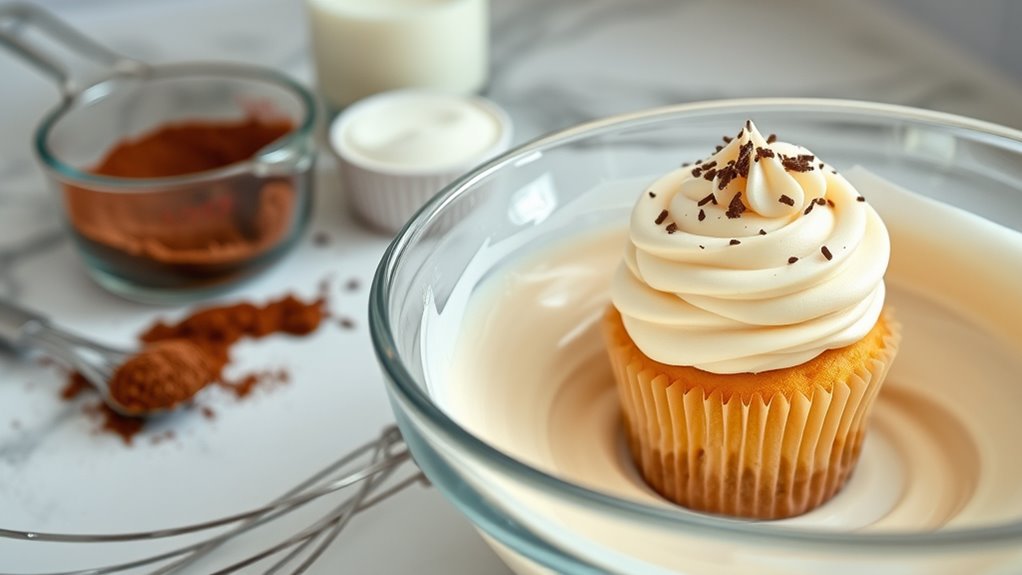
When preparing pudding frosting, paying attention to temperature is crucial for achieving the perfect texture. If your frosting is too warm, it may become runny; too cold, and it could be stiff and difficult to spread. Mastering frosting techniques guarantees smooth, even coverage and a professional finish. Don’t hesitate to experiment with flavor variations to personalize your frosting and break free from the ordinary. Here are some practical tips:
- Chill your bowl and beaters before whipping for better volume.
- Use a fine mesh sieve to prevent lumps in your pudding.
- Incorporate extracts (vanilla, almond) or zest for subtle flavor twists.
- Gradually add powdered sugar to control sweetness and consistency.
- Apply frosting with a spatula held at a slight angle for smooth layering.
These steps empower you to create flawless pudding frosting every time.
Food Value and Benefit
Pudding frosting combines creamy dairy with sweetened ingredients, providing a delicious and nutritious addition to your dessert. This prepared dish offers a balance of energy and essential nutrients, making it both satisfying and beneficial.
Food Value of Pudding Frosting:
- Contains calcium and protein from milk or cream, supporting bone health and muscle function.
- Provides carbohydrates from sweeteners, supplying quick energy.
- Contains small amounts of vitamins such as Vitamin A and B vitamins from dairy ingredients.
- Supplies minerals like phosphorus and potassium, important for overall bodily functions.
Benefits of Eating Pudding Frosting:
- Supports strong bones and teeth due to its calcium content.
- Aids muscle repair and growth with its protein supply.
- Offers a quick source of energy from carbohydrates.
- Contains vitamins and minerals that contribute to immune health and cellular function.
- Enhances dessert enjoyment with a creamy texture and natural sweetness when made with quality ingredients.
